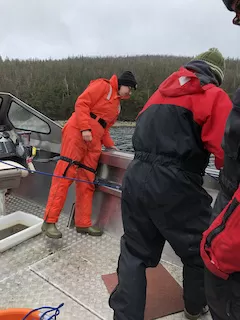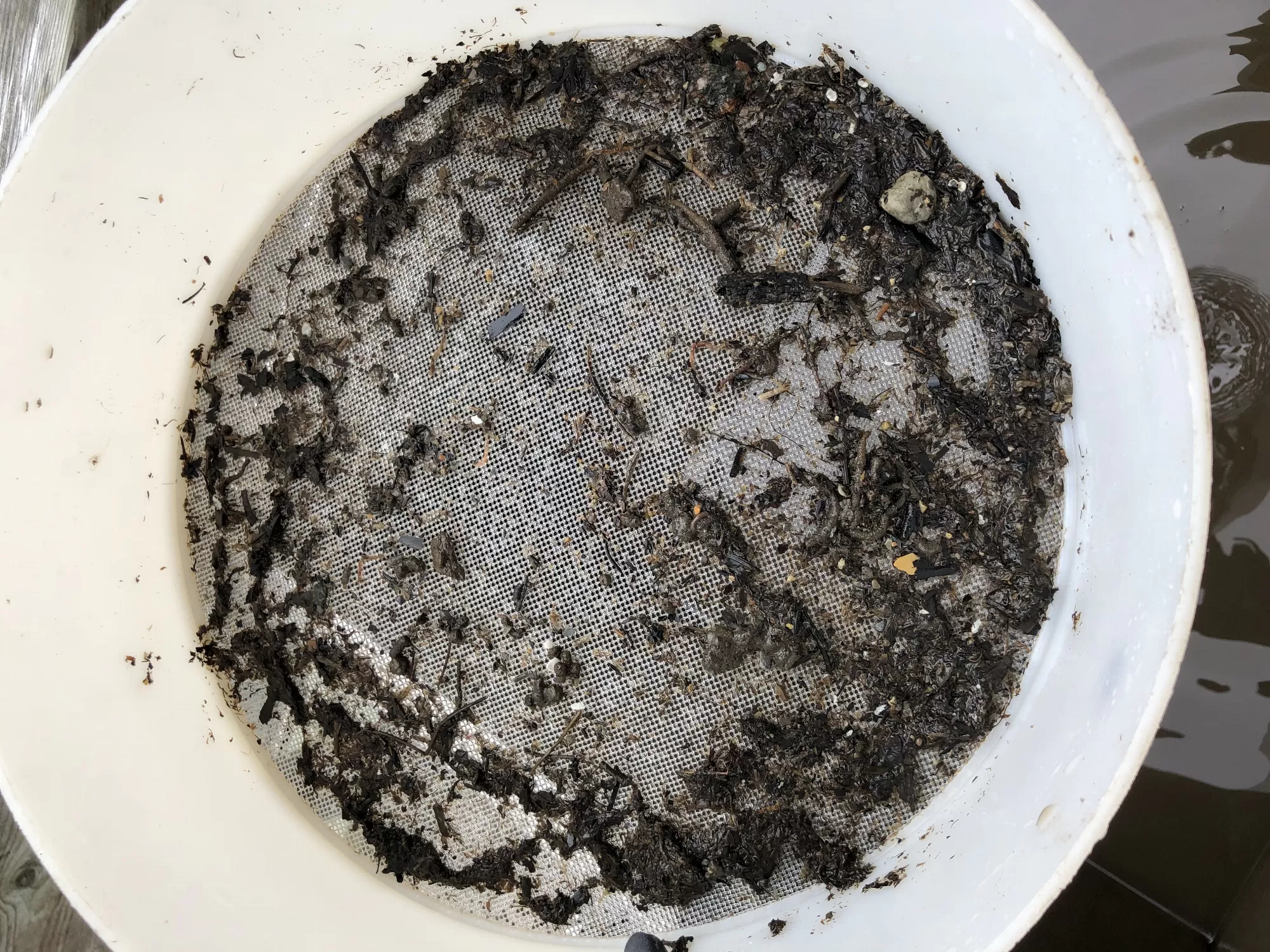Oceans as a Lab
Off the shores of the Bonne Bay Marine Station, you can find Dr. Suzanne Dufour standing on a boat with a device called a grab sampler that’s diving into the depths of the ocean below. As the sampler cuts through into the water, it reaches the prize at about 15-20m deep and Dr. Dufour commands the jaws of the sampler to snap shut. The prize is caught! A winch is then tasked with pulling the sampler back above the water while ensuring the prize remains securely enclosed within. The prize is collected into a container on the boat and the sampler is sent back into the ocean to repeat this process another 10 to 20 times.

What is this prize that Dr. Dufour keeps scooping up from the depths of the oceans? It’s mud.
Dr. Dufour then takes these prized samples back to her lab where she analyzes them to study the beneficial interactions between bacteria and organisms. If you are baffled as to what organisms someone could find in a pile of mud, and how you would go about studying them along with something as tiny as bacteria, you would not be the only one.
The organisms that Dr. Dufour studies are actually tiny clams that live in the mud and what is cool about them is that they get nutrients through interactions with symbiotic bacteria that supplement food they gather using their own appendages.
Often, when thinking about bacteria, what pops into our minds are unpleasant images of illnesses caused by bacterial infections. Dr. Dufour points this out as well:
“So, a lot of us when we think about animals, ourselves even, interacting with bacteria, we tend to think about pathogens or disease, but there are lots of microbes that provide important benefits to animals, and that’s what I’m interested in. I’m interested in these collaborative interactions or symbioses between animals and bacteria, and I study that in a marine system.”

An analogy Dr. Dufour uses to better understand this is to look within ourselves; we can compare the beneficial relationships between the bacteria and the invertebrate clam species to that of the bacteria within our gut and ourselves. Our gut bacteria helps maintain good human health, and similarly, the bacteria help these small animals survive in their marine environment.
Now, how does Dr. Dufour study these interactions if the organisms being studied, especially bacteria, are invisible to the naked eye? Simply put, there are lot of different ways. She incorporates genetics, behavioral studies, microscopy, and much more to directly and indirectly observe how these beneficial interactions take place. One experiment Dr. Dufour elaborated on involved a burrowing experiment to study the clams’ behavior, where she induced the clams she collected to burrow themselves in sediment and see how they responded to external stimuli.
Recent research has relied on microscopy, which has been used to directly observe the bacteria attached to the clams in the collected samples. Additionally, current research has heavily relied on genomics:
“That’s allowed us to look at the identities of these bacteria which [researchers] do collect from the clams themselves – they’re able to live freely in their environment but are also able to live in a symbiotic interaction with the clams as well. We’re now able to look at how the genome of these bacteria has been or has not been modified and how that can benefit the animal as well. So those are approaches that when I started out on research, were too difficult to do – we didn’t have that kind of capacity.”

Furthermore, technological advancements allowed Dr. Dufour and her team to discover needle-like magnetosomes within these symbiont bacteria, which were never seen in these types of organisms before. She also notes that another significant contribution done by others in the same field was the discovery that beneficial symbiont bacteria and pathogenic bacteria are both equipped with a similar “genomic toolkit”, implying that perhaps, there may be certain conditions under which bacteria switch between being pathogenic or beneficial.
Dr. Suzanne Dufour’s research is a great example of an overarching theme: our oceans can be our laboratories. Essentially, due to the ocean’s vast nature, and the fact that there is an extraordinary amount of the ocean yet to be explored, they present a unique opportunity for researchers from all disciplines to ask and answer questions through experimentation.
“… you can find these natural situations in the ocean that can address [research questions] if you design your experiment in a clever enough way. So yeah, you can use the ocean and its variation as a natural type of laboratory.”
One might think that Dr. Dufour’s research is difficult enough as it is, trying to localize her research in a seemingly never-ending ocean, while dealing with the issue of finding new specimens, which have been further exacerbated by the effects of climate change (something that Dr. Dufour herself has personally witnessed). Yet, she states that one of the more difficult aspects of her career is not her research itself, but actually keeping up with the overwhelming amount of research being conducted within her field:
“It’s like drinking out of a fire hose!”